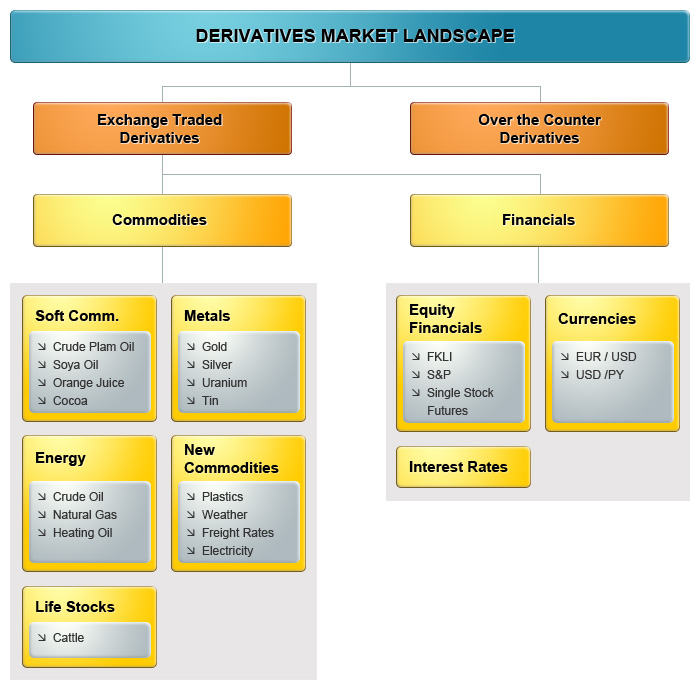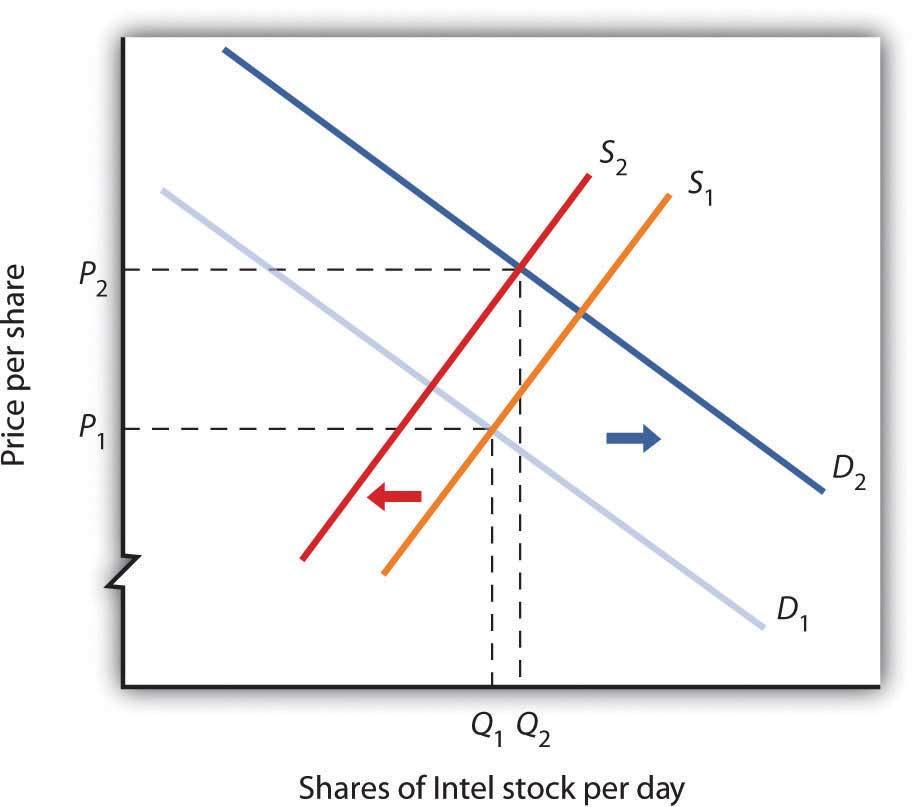वैश्विक: शेयर बाजार कैसे काम करता है?
पाठ सीखने के उद्देश्य:
- परिचय: Gain a foundational understanding of how stock markets function globally, focusing on the mechanisms of स्टॉक एक्सचेंज और over-the-counter (OTC) markets. This knowledge is essential for anyone interested in participating in or understanding global financial markets.
- के बारे में जानें role and impact of derivatives in the financial markets, including how they are used for hedging and speculative purposes in both exchange-traded और OTC derivatives markets.
- Understand the concept of fractional ownership as it applies to stocks, which allows investors to own a portion of a company and benefit from its growth and profits. This principle is fundamental for individual investors in the stock market.
- Explore how आपूर्ति और मांग influence stock prices, including the factors that drive these market forces such as company performance, investor sentiment, and broader economic conditions.
A. How Does the Stock Market Work?
At its core, the शेयर बाजार is a platform where investors buy and sell ownership in companies through shares. Stock markets can be divided into two main types: स्टॉक एक्सचेंज और over-the-counter (OTC) markets.
Stock exchanges, like the New York Stock Exchange (NYSE) और Tokyo Stock Exchange (TSE), provide a centralized and regulated marketplace for trading stocks. These exchanges ensure transparency, liquidity, and fairness by requiring companies to adhere to strict listing rules and offering investors access to financial data.
OTC markets, by contrast, are decentralized and involve trading directly between parties without using a central exchange. While OTC markets allow for more flexible and less regulated transactions, they can carry higher risks due to the lack of centralized oversight. Products traded on OTC markets often include derivatives और बांड, which may not be listed on regular stock exchanges.
Whether traded on an exchange or OTC, the basic principle of buying and selling stocks remains consistent: investors seek to buy shares in companies they believe will grow in value and sell shares when they expect the value to decline.

आकृति: Derivatives Market Landscape
विवरण:
The image categorizes the derivatives market into two types: Exchange-Traded Derivatives और Over-the-Counter (OTC) Derivatives. It further divides derivatives into two main asset classes: माल और वित्तीय स्थिति. Commodities include soft commodities, metals, energy, new commodities, और life stocks. Financials include equity financials, currencies, और ब्याज दर.
चाबी छीनना:
- Exchange-Traded Derivatives are standardized and traded on regulated exchanges, while OTC derivatives are privately negotiated and traded off-exchange.
- The market comprises various commodity derivatives, including soft commodities, metals, energy, and newer forms like plastics और electricity.
- Financial derivatives cover different areas, such as equities, currencies, और ब्याज दर, allowing traders to hedge against various financial risks.
- The landscape provides a comprehensive view of the diverse derivative products available for hedging or speculative purposes.
सूचना का अनुप्रयोग:
समझना derivatives market landscape helps investors identify the wide range of products available for hedging risks or achieving speculative gains. This categorization aids in choosing the right derivative instruments based on their needs, whether related to वस्तुएं या financials, and whether to use exchange-traded या OTC derivatives.
B. Stocks as Fractional Ownership
In the stock market, owning a stock means holding a fractional ownership in a company. Each share represents a small piece of ownership in the company, giving shareholders certain rights, such as voting on key decisions and receiving dividends when the company profits.
This concept of fractional ownership is significant because it allows individuals to participate in the success of large companies without having to own the entire company. As the company grows and becomes more profitable, the value of the shares typically increases, rewarding investors for their investment.
Stocks make it possible for investors to diversify their portfolios by buying small pieces of many different companies across various industries, spreading risk and increasing the potential for returns. Fractional ownership in the stock market gives individuals, regardless of their financial background, the opportunity to invest in companies they believe in and share in their growth.
आकृति: Blockchain and Fractional Real Estate Ownership
विवरण:
The figure shows the shift from full ownership of real estate (as it exists currently) to fractional ownership enabled by blockchain technology in the future. Currently, individuals own 100% of real estate assets. The future model, as represented, involves multiple owners holding fractions of the real estate through security tokens that denote ownership percentages, making it possible for investors to have partial ownership of a property.
चाबी छीनना:
- Current Model: Real estate ownership involves one party holding full control and rights over the asset.
- Future Model: Blockchain technology enables fractional ownership where multiple investors can own parts of the same asset.
- Security Tokens: Tokens represent ownership shares, ensuring transparency, security, and easier transferability.
- Increased Access: Fractional ownership lowers the barrier to entry, allowing more investors to participate in real estate markets.
सूचना का अनुप्रयोग:
The concept of fractional ownership via blockchain is useful for investors looking to diversify their portfolios without needing to commit large sums of capital to a single property. It makes real estate investment more accessible and provides opportunities for liquidity और विविधता across different properties. Understanding this trend can help users explore innovative investment options in the evolving real estate market.
C. Companies, Supply, and Demand for Stock
Stock prices are driven by आपूर्ति और मांग, the fundamental forces that underpin any market. When more people want to buy a stock than sell it, demand increases, pushing the price higher. Conversely, when more people are selling than buying, supply increases, and prices fall.
The supply of a company’s stock is determined by the number of shares available for trading, which can be influenced by factors such as stock splits, share buybacks, or the issuance of new shares. Meanwhile, demand is influenced by various factors, including a company’s financial health, economic conditions, and investor sentiment.
For example, if a company reports strong earnings and investors believe it has good growth prospects, demand for its shares may rise, pushing up the price. On the other hand, negative news about a company, such as declining sales or leadership changes, can reduce demand, leading to a price drop.
Supply and demand are also affected by broader market trends, such as economic policy, interest rates, and global events, which can cause investors to move in and out of stocks rapidly. Understanding these dynamics helps investors anticipate how stock prices might fluctuate and make informed investment decisions.

आकृति: आपूर्ति और मांग में बदलाव, मूल्य पर प्रभाव
विवरण:
The graph illustrates how shifts in demand and supply affect the equilibrium price and quantity of Intel stock. The initial equilibrium is at the intersection of the original demand (D1) and supply (S1) curves, setting the price at P1 and the quantity at Q1. When demand shifts to D2 (rightward shift), the equilibrium price rises to P2 and the quantity increases to Q2. Simultaneously, if the supply shifts from S1 को S2 (leftward shift), it further impacts the equilibrium, emphasizing the interaction of demand and supply dynamics on stock prices.
चाबी छीनना:
- Rightward shift in demand indicates increased interest, raising both price and quantity.
- Leftward shift in supply indicates a reduction in available shares, leading to a higher equilibrium price.
- Equilibrium price and quantity change as a result of simultaneous shifts in both demand and supply.
- Price elasticity of demand and supply plays a critical role in determining the final impact on stock price and quantity.
सूचना का अनुप्रयोग:
Understanding demand and supply shifts is crucial for investors analyzing stock market dynamics. By recognizing these shifts, investors can better anticipate price changes and make informed trading decisions. The graph also highlights the importance of monitoring बाजार के रुझान and external factors that may influence both demand and supply for a particular stock.
मुख्य पाठ जानकारी:
- Stock markets provide a platform for buying and selling shares, with exchanges offering a regulated environment and OTC markets allowing for more flexible transactions. Each has its own benefits and risks, affecting how securities are traded.
- Derivatives markets play a critical role in the financial ecosystem by providing tools for risk management and speculative opportunities. Understanding the types of derivatives and the markets in which they are traded can greatly enhance an investor’s ability to manage financial risks.
- Fractional ownership makes it possible for individual investors to participate in the equity of large companies without significant capital outlay, democratizing access to wealth-building opportunities through the stock market.
- The dynamics of आपूर्ति और मांग are central to understanding stock price movements. External factors such as economic indicators, corporate performance, and geopolitical events can significantly influence these forces, impacting stock prices and investment strategies.
बंद बयान:
By comprehending the basic workings of stock markets, the strategic use of derivatives, the concept of fractional ownership, and the interplay of supply and demand, you are better equipped to navigate the complexities of the financial markets. This foundational knowledge is crucial for both new and experienced investors to make informed decisions and strategically manage their investment portfolios.


